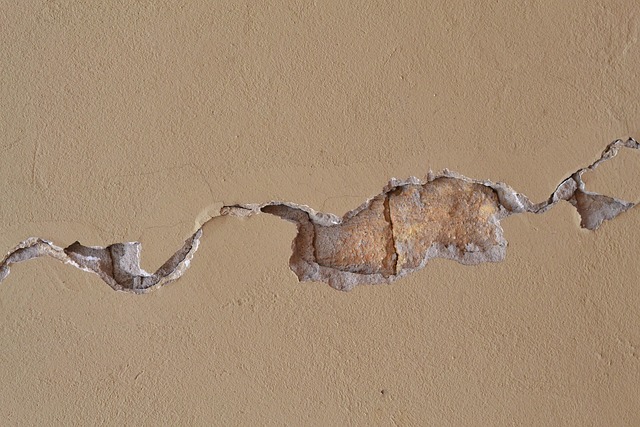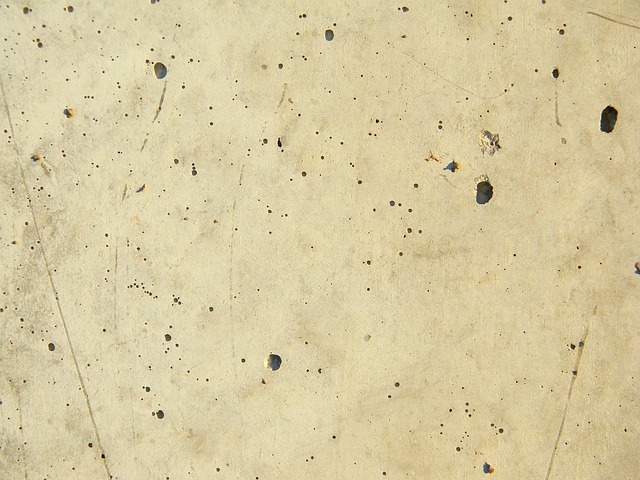Concrete cracks, from hairline fractures to deep gaps, can compromise structural integrity due to settlement, freeze-thaw cycles, or moisture. Assessing crack severity through inspection is vital for selecting repair methods like epoxy injections for minor cracks or replacement for severe cases. Effective repair requires cleaning, preparation, and using appropriate materials tailored to crack width and depth. For small cracks, DIY methods are suitable; larger ones demand professional intervention due to potential structural issues. Regular maintenance, including inspection, drainage, and sealing, prevents future cracks. Concrete repair ensures long-term stability and maintains building integrity.
Concrete cracks can mar the aesthetics and structural integrity of surfaces. However, with the right approach, they can be effectively repaired. This comprehensive guide delves into various aspects of concrete crack repair, from understanding the causes and types of cracks to assessing damage and choosing the right materials. We provide step-by-step instructions for repairing small and large cracks, offer maintenance tips to prevent future issues, and explain when to seek professional help. Discover best practices for long-lasting concrete repair.
Understanding Concrete Cracks: Causes and Types

Concrete cracks can range from thin hairline fractures to large, deep gaps that compromise the structure’s integrity. Understanding the causes and types of concrete cracks is crucial for effective concrete repair. Some common causes include structural defects, settlement or shifting of the foundation, freeze-thaw cycles, corrosion of steel reinforcement bars, and excessive moisture. These factors can lead to various crack types such as hairline cracks, diagonal cracks, vertical cracks, and stepped cracks, each indicating specific issues within the concrete structure.
Identifying the type of crack is essential for selecting the right repair method. For instance, hairline cracks might be superficial and cosmetic, while larger cracks could signal structural weaknesses that require more substantial repairs. Concrete repair techniques vary based on these differences, from simple epoxy injections for smaller cracks to more complex methods like carbon fiber reinforcement or full-scale replacement for severe cases.
Assessing the Extent of Damage: Crack Inspection

Assessing the extent of damage is a crucial step in concrete crack repair. The first step involves thoroughly inspecting the cracked area to determine its severity and type. This includes identifying the width, length, depth, and pattern of cracks, as well as any signs of structural instability or ongoing movement. Proper tools like measuring tapes, level tools, and cameras with zoom capabilities can aid in this process.
During crack inspection, professionals also consider factors such as age, environmental conditions, and previous repairs to accurately diagnose the root cause. This comprehensive evaluation enables them to select the most effective concrete repair method for specific cracks, ensuring long-lasting stability and structural integrity.
Materials and Tools for Repair: What You'll Need

When it comes to repairing cracks in concrete foundations, the right materials and tools are essential for a successful and lasting fix. For smaller cracks, a simple epoxy injection or a hydraulic cement-based product can be effective. Epoxy injections provide superior strength and flexibility, making them ideal for preventing further crack propagation. These two-part systems typically include an epoxy resin and a hardener, which, when mixed, create a powerful bonding agent that fills the crack completely.
For wider cracks or areas of significant structural damage, a more robust approach is required. In such cases, concrete repair composites or specialized concrete patching compounds are recommended. These products come in various forms, like dry-mix mortars or ready-mixed solutions, and offer excellent adhesion and durability. Tools needed for the process may include wire brushes for cleaning the crack, trowels for applying the repair material, and a plastic shovel for mixing and shaping the compound. Ensure you follow the manufacturer’s instructions for mixing ratios and application techniques to achieve optimal results in your concrete repair project.
Step-by-Step Guide to repairing Small Cracks

Repairing small cracks in concrete foundations is a straightforward process that can help prevent further damage and maintain the structural integrity of your home. Here’s a step-by-step guide to tackling this task efficiently. Begin by cleaning the crack using a wire brush or power washer, removing any loose debris, dust, or dirt. This ensures good adhesion for the repair material.
Next, mix a concrete repair compound according to the manufacturer’s instructions. Typically, this involves combining the compound with water in a bucket. Apply the mixed compound to the crack using a putty knife, filling it completely and ensuring there are no air pockets. After smoothing the surface, allow the repair compound to dry according to the product’s recommended drying time. Once dried, lightly sand the area to create a rough texture for better bonding with future sealers or coatings.
Large Crack Repair: Techniques and Considerations

Large crack repair in concrete structures requires a systematic approach, considering both structural integrity and aesthetic restoration. The techniques employed vary based on the depth and width of the crack. For more substantial cracks, often seen in older buildings, a process called carbon fiber reinforcement is used. This method involves embedding carbon fiber strips within the crack, providing immense strength while also allowing for minimal invasive repair, preserving the original structure’s integrity.
When dealing with large cracks, careful planning and professional assessment are crucial. Concrete repair specialists need to understand the root cause of the crack—whether it’s due to settlement, shifting earth, or structural failures—to ensure the long-term stability of the foundation. This might involve further investigations like soil testing and structural analysis. The goal is not just to fix the visible crack but also to address any underlying issues for a permanent solution.
Preventing Future Cracks: Maintenance Tips

Preventing future cracks is an essential aspect of concrete repair and maintenance. Regular inspection is key; regularly check your foundation for any signs of damage or cracks, even the tiniest ones. This proactive approach allows for early intervention, preventing what might become significant issues over time. When inspecting, look out for uneven floors, peeling paint, or water stains, as these could indicate structural problems.
Beyond inspection, maintaining proper drainage around your property is crucial. Ensure that rainwater is directed away from your foundation by installing appropriate gutters and downspouts. Additionally, keep the area around your foundation free from debris and vegetation, allowing for adequate air circulation and preventing potential soil pressure that can contribute to cracks. Regular concrete repair and sealing can also add a protective layer, shielding against moisture intrusion and prolonging the lifespan of your foundation.
When to Call a Professional: Complex Concrete Repair

If you notice cracks in your foundation that are wider than a few millimeters or growing over time, it’s crucial to address them promptly. While minor cracks might not seem concerning initially, they can indicate underlying issues such as settling, shifting soil, or structural damage. Attempting DIY Concrete Repair for these complex problems may not be effective and could lead to further complications.
In cases where cracks are extensive, involve columns or beams, or show signs of structural instability, it’s time to call in a professional. Complex concrete repair requires specialized knowledge and equipment. Experts can assess the damage, determine the cause, and provide long-lasting solutions. They will ensure that any repairs match the original concrete, enhancing the building’s integrity and preventing further deterioration.
Best Practices for Concrete Repair and Longevity

When undertaking concrete repair, adhering to best practices is paramount to ensuring longevity and structural integrity. The first step involves thorough inspection to identify the root cause of cracks, which could be due to settlement, differential shrinkage, or more severe issues like erosion or damage from roots. Proper preparation of the affected area is crucial; this includes cleaning the crack to remove any debris, rust, or loose concrete, ensuring a clean and dry surface for the repair material to bond effectively.
Using suitable materials tailored to the specific repair needs is essential. Epoxy injections, for instance, offer excellent strength and resistance to chemicals, making them ideal for structural repairs. For smaller cracks, polymer-modified cement can provide both flexibility and durability. Proper application techniques, such as ensuring a consistent thickness and filling the crack completely, contribute to the long-term effectiveness of the repair. Regular maintenance, including sealing and resealing to prevent moisture ingress, is also key in preserving the integrity of concrete structures.
